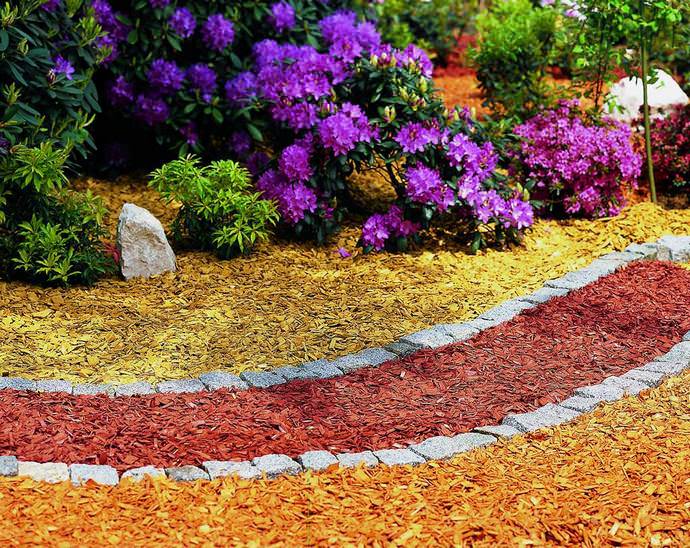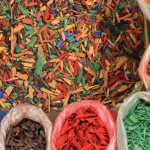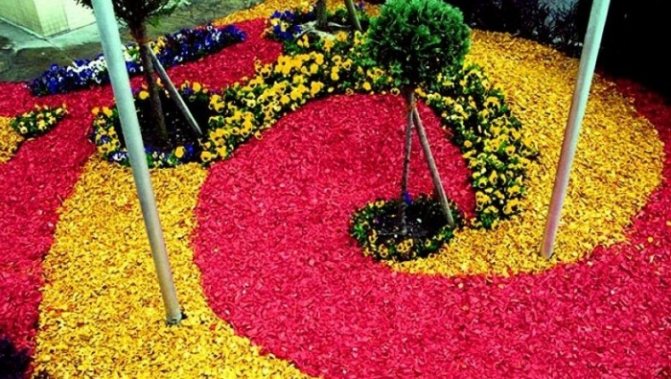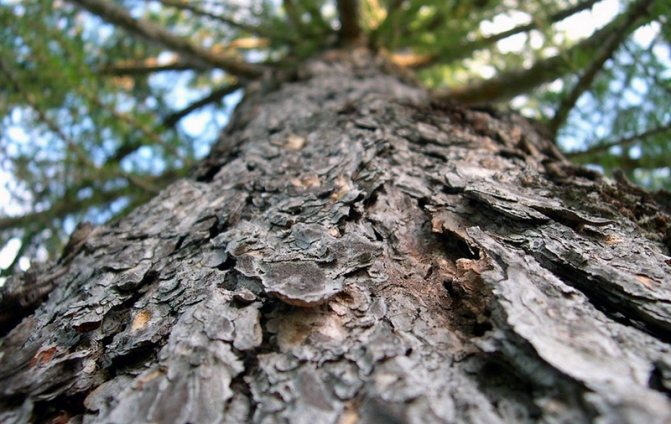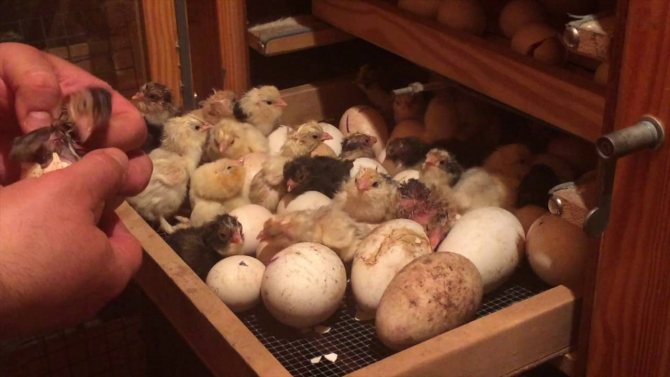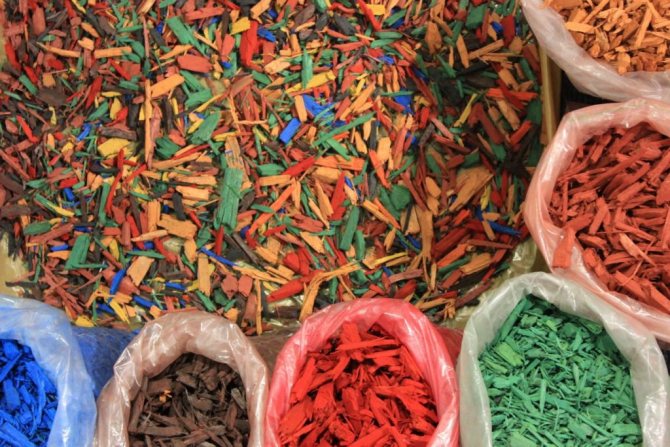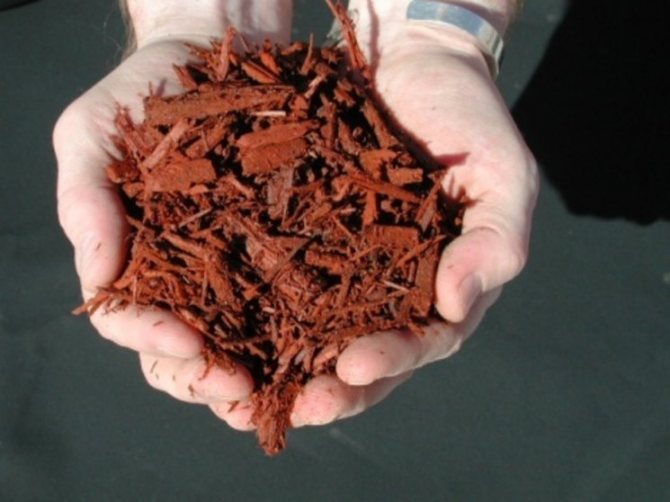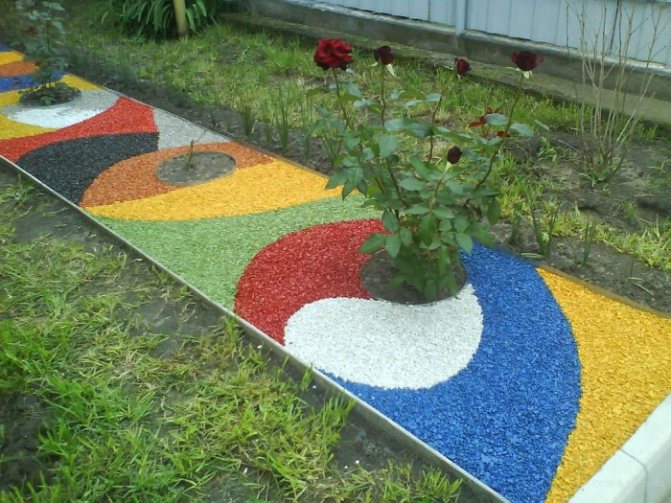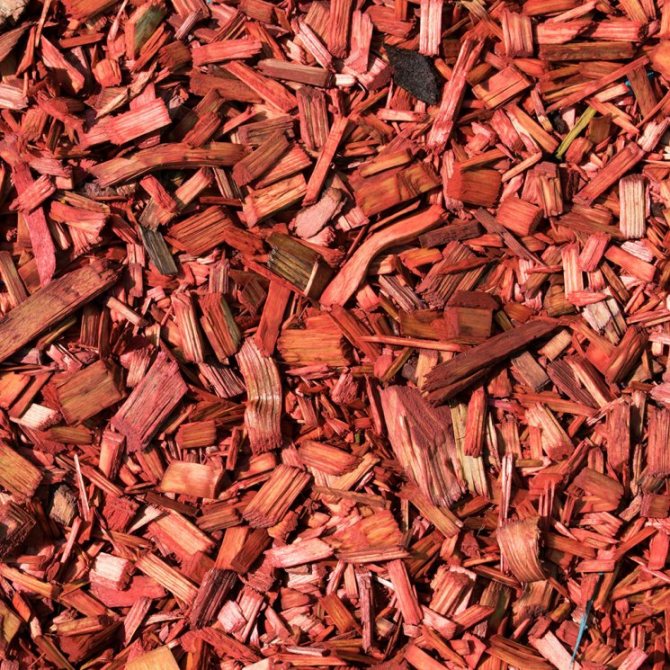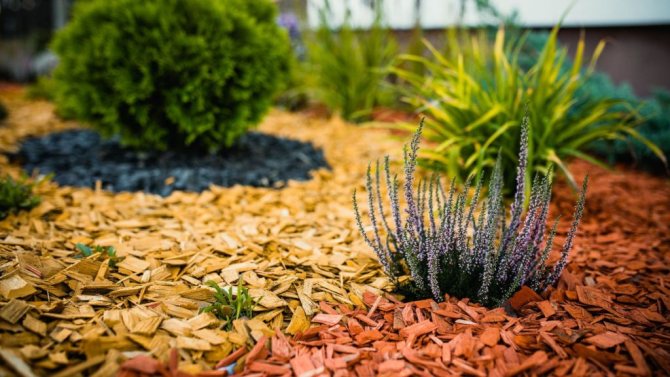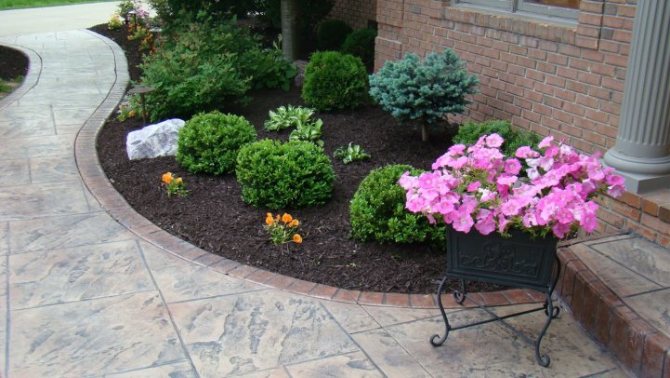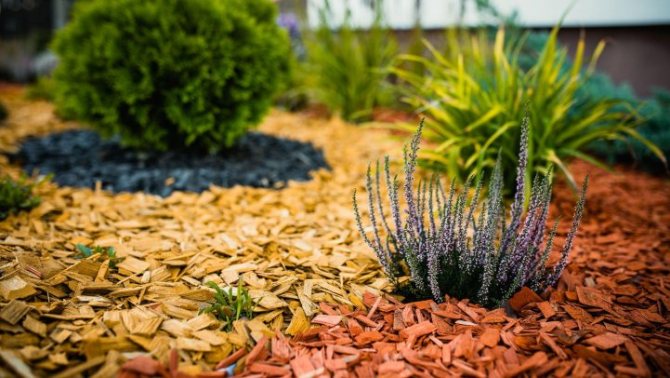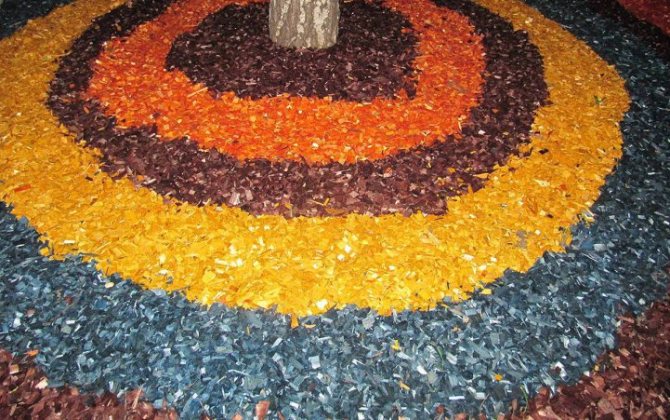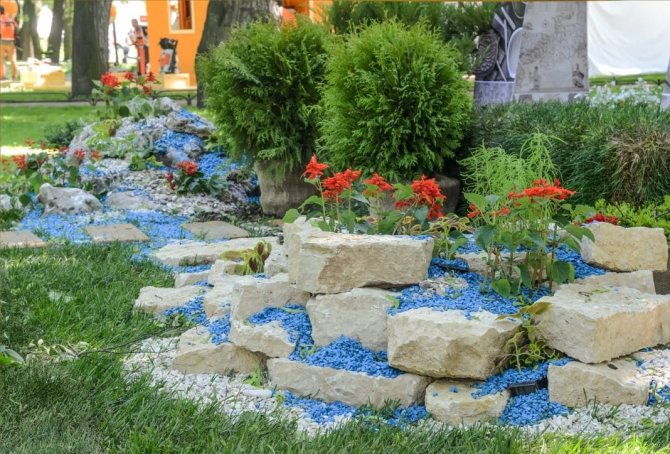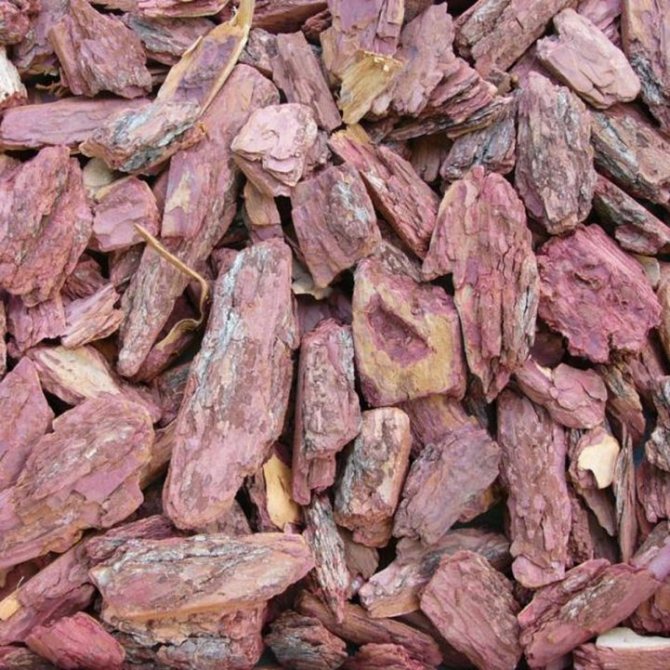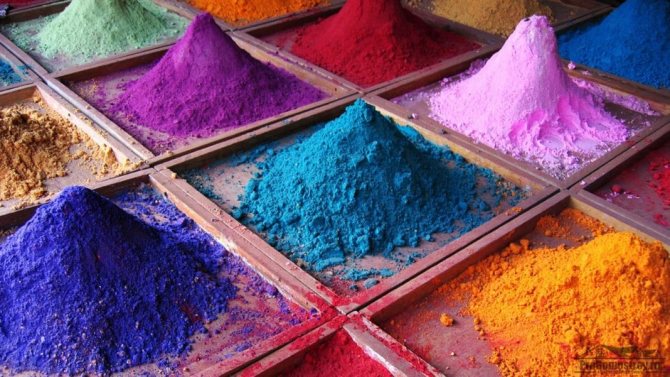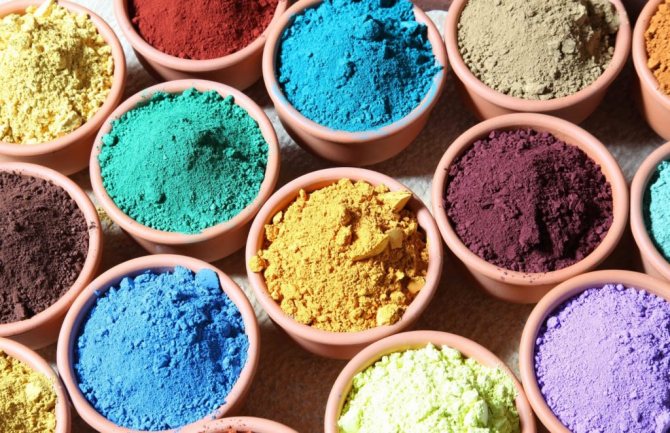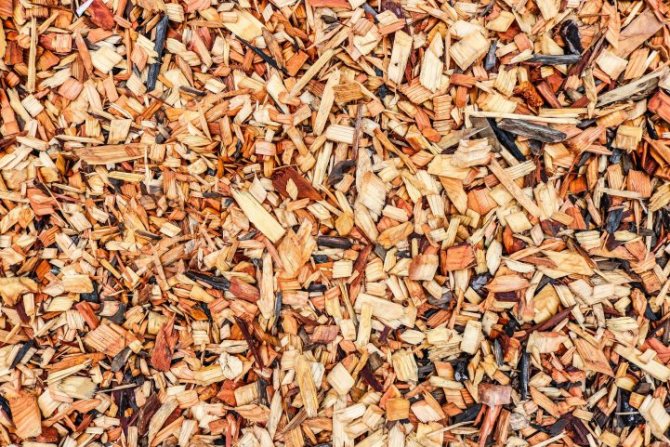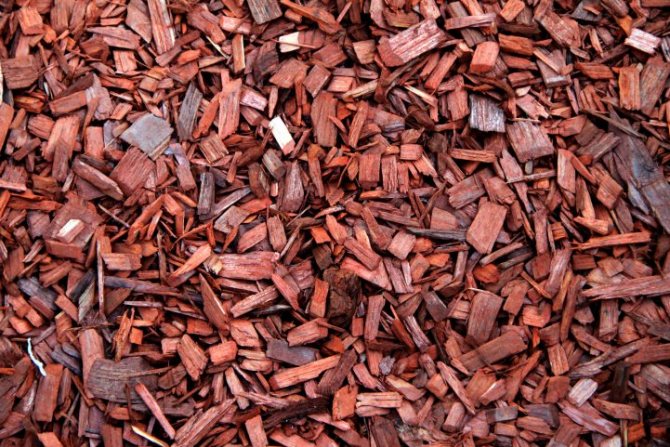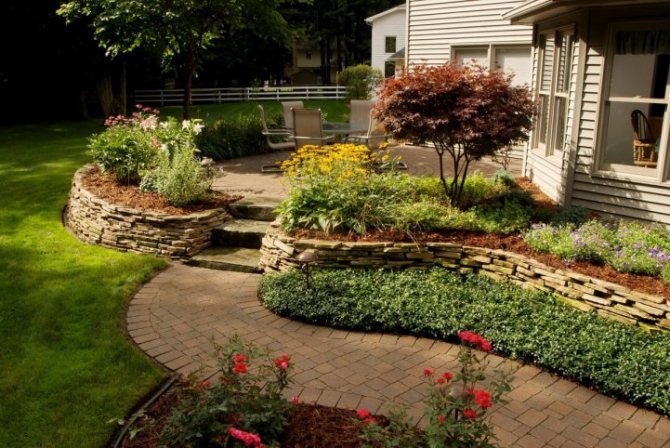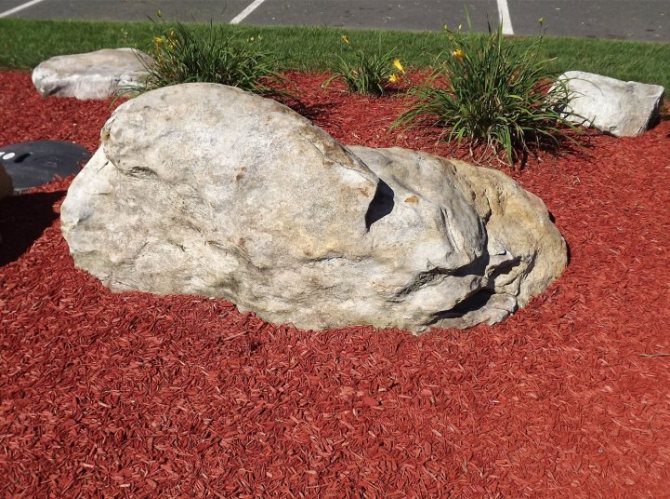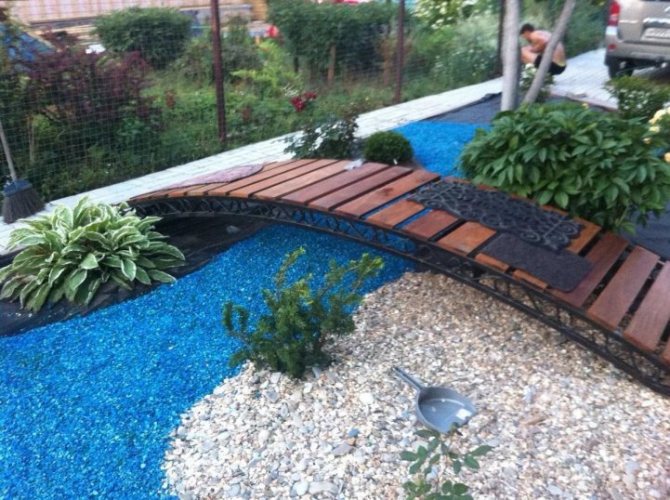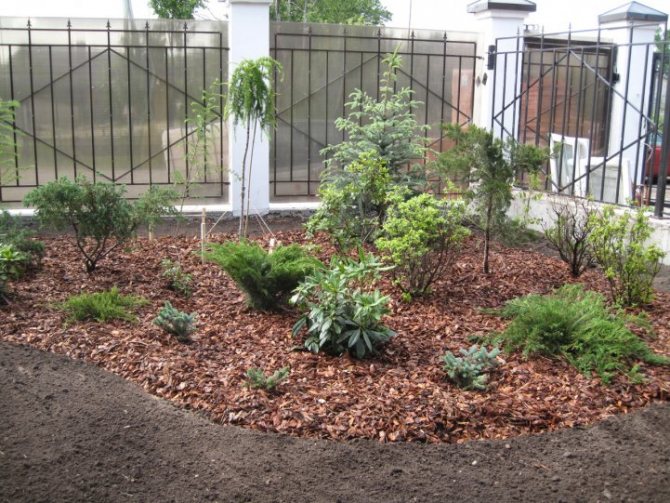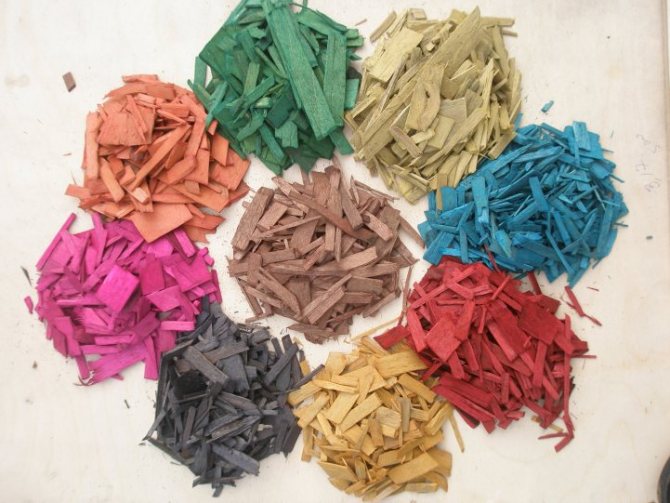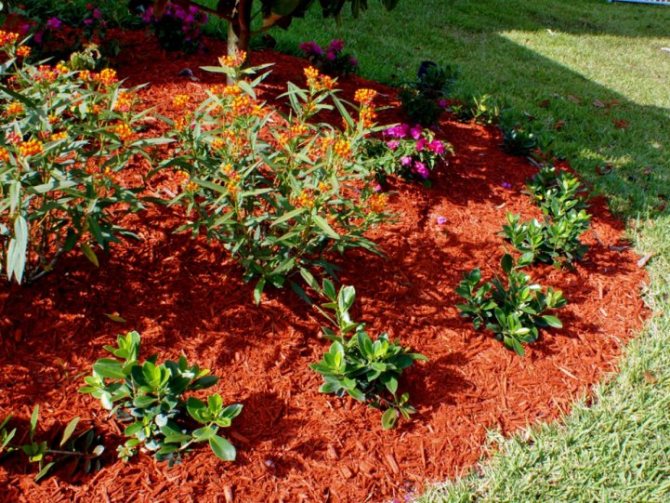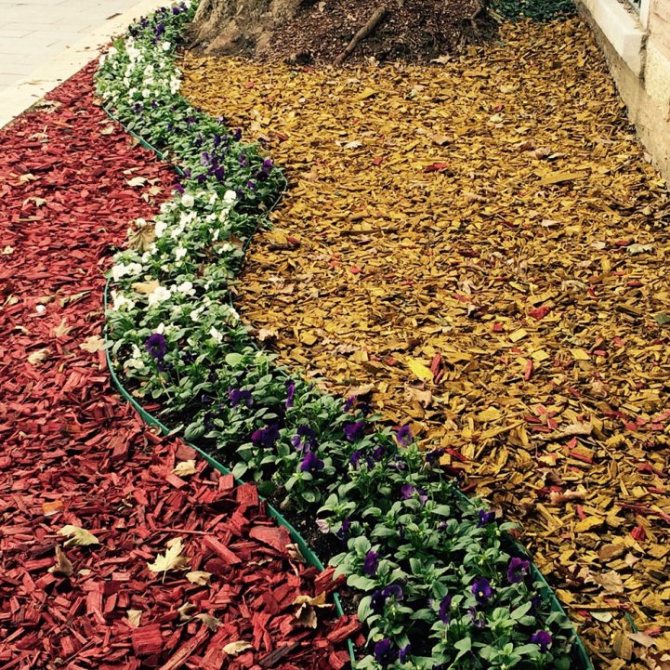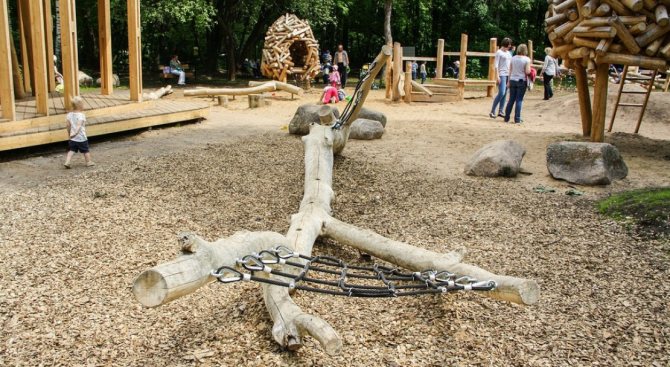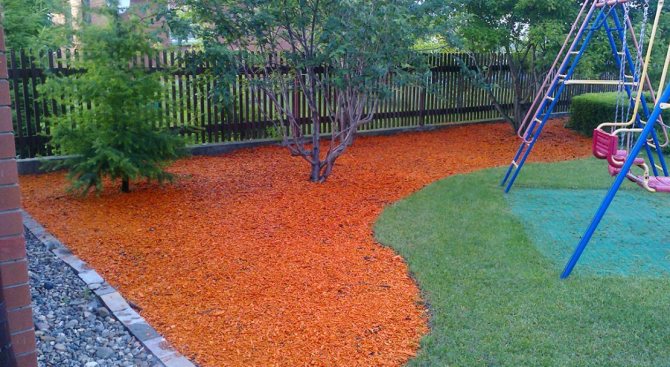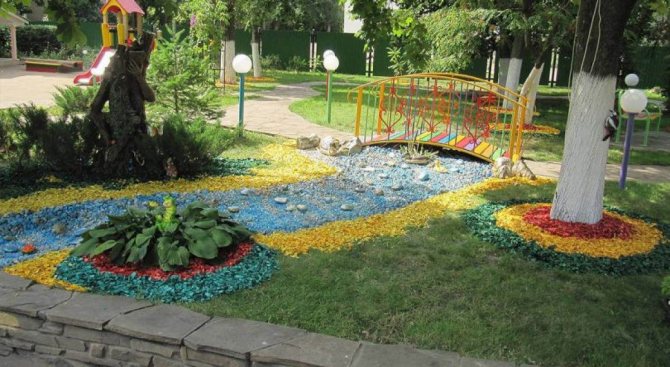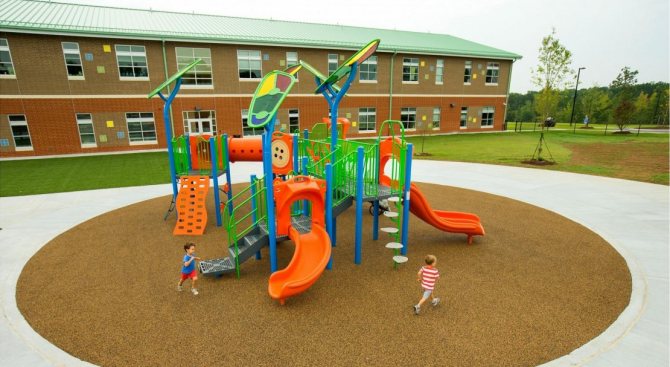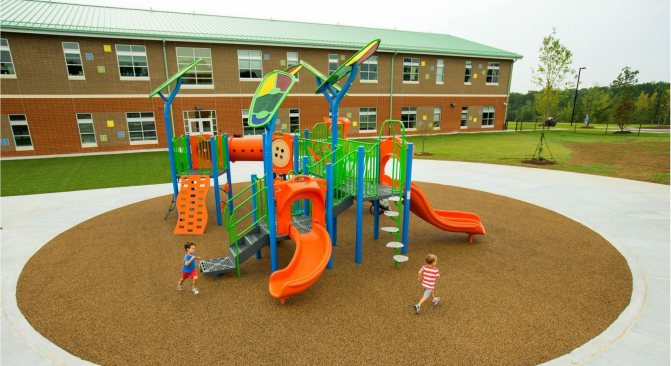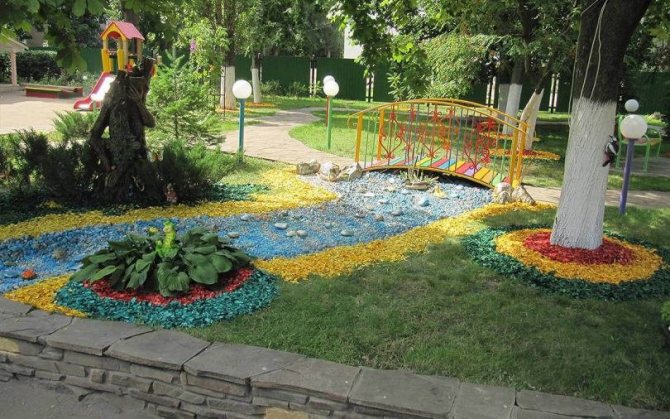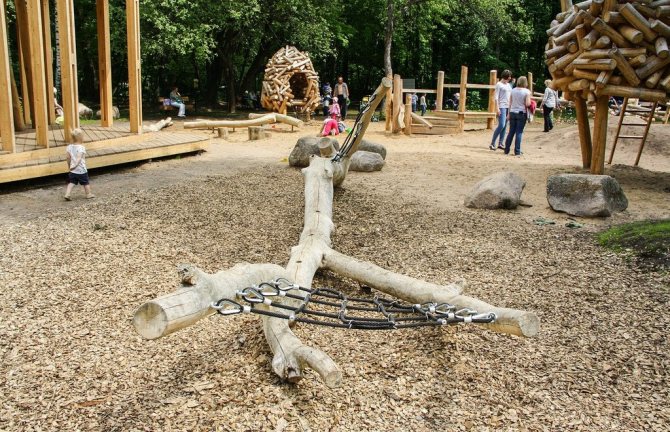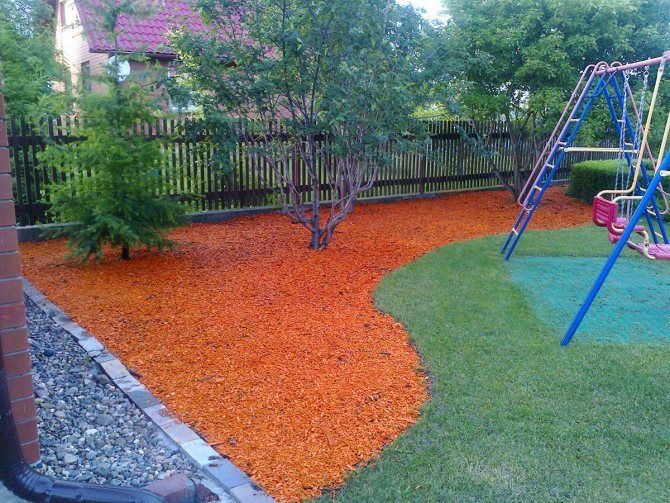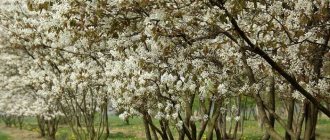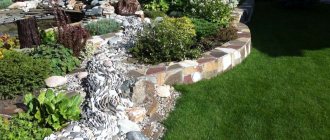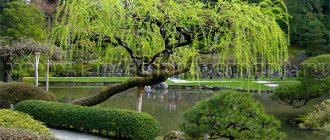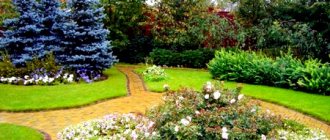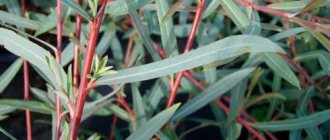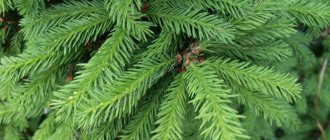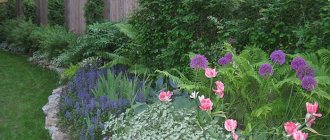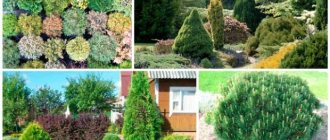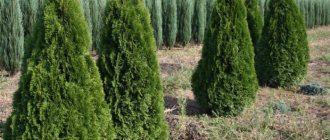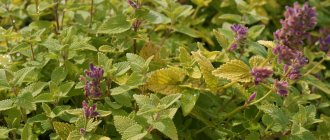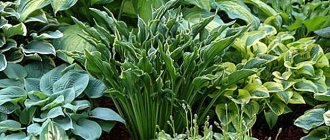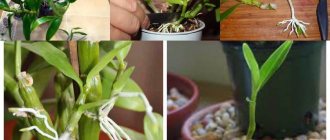Mulching is an agrotechnical way of caring for vegetation, which prevents premature drying out and excessive moisture of the soil substrate. It is used to protect cultivated species from weeds.
For this design, various types of finishing and decorative materials are used. Most often, summer residents prefer to use dry grass, straw, sawdust, small pebbles or wood chips.
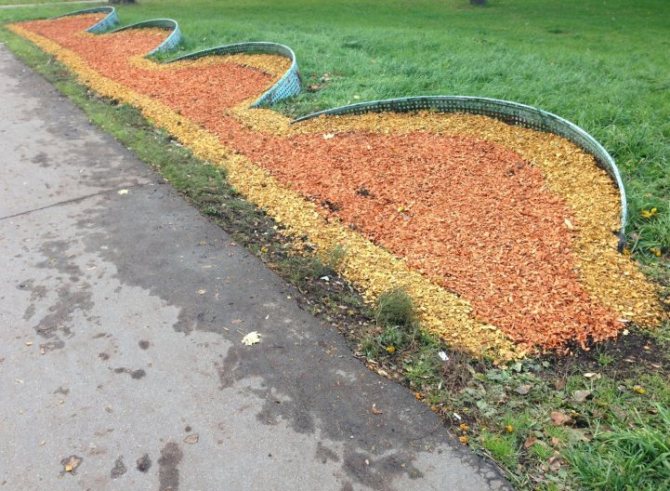
Varieties of mulch
Soil mulching is one of the most important agricultural techniques to maintain the required soil moisture. In addition, mulch prevents the growth of weeds, improves soil composition and often serves as a decoration for the landscape. There are different types of mulch, which are divided into two main types: organic and inorganic. As an organic mulch, materials are chosen that can quickly release nutrients and help beneficial microorganisms develop in the soil.
Important! The organic mulch should be laid in such a way that it does not touch the stem of the plant. It can rot from contact with damp material.
These include:
- Wood chips and bark. It is not only an excellent mulching material for fruit trees and shrubs, but also an excellent decorative coating used in landscape design. Bark and wood chips protect the soil from compaction, stimulate the activity of soil organisms, which improve the composition of the earth.
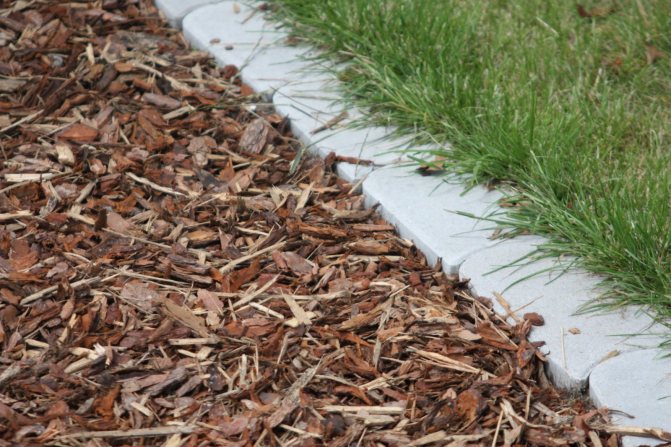

- Coniferous needles... The needles are often used by gardeners as mulch, as they have a lot of properties: they protect the soil from drying out, scare away slugs, snails and other pests, prevents the growth of weeds, and repels the sun's rays.
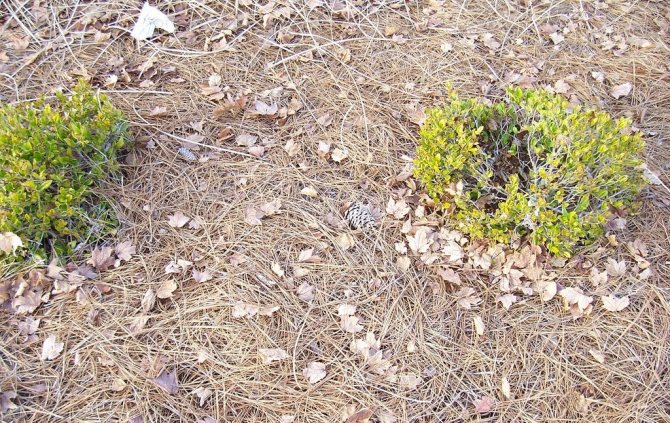

- Peat... This natural fossil is an excellent mulching material, as it improves the fertility and chemical composition of the soil. If you lay it under trees and bushes for the winter, the earth will thaw faster in spring.
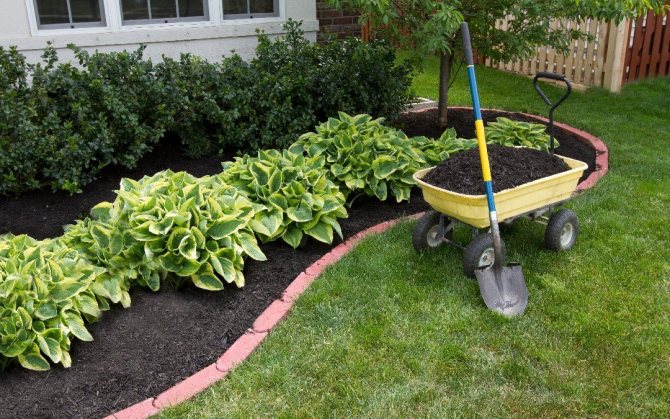

- Sawdust... With the help of sawdust, you can make a warm shelter for the winter, and in the summer they will protect the soil from drying out. This material looks quite aesthetically pleasing in the garden, therefore it is often used to decorate the landscape, as well as to decorate paths.
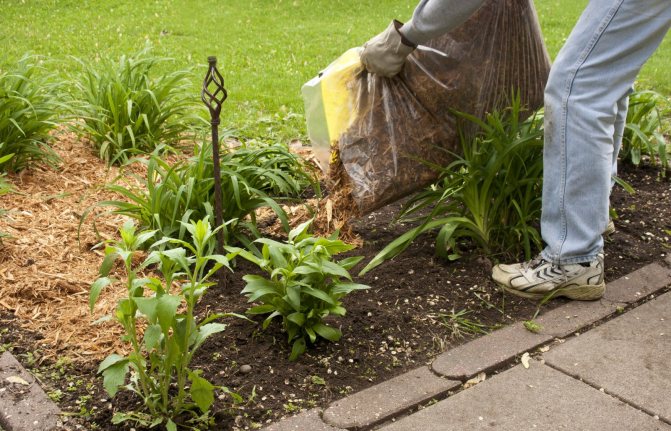

- Compost and humus... These materials contain many nutrients that the plants are saturated with for a long period of time. Mulch is introduced in spring, when the active growth of greenery begins. Of course, there is no need to talk about any aesthetic qualities in this version, but the benefits of this material are enormous.
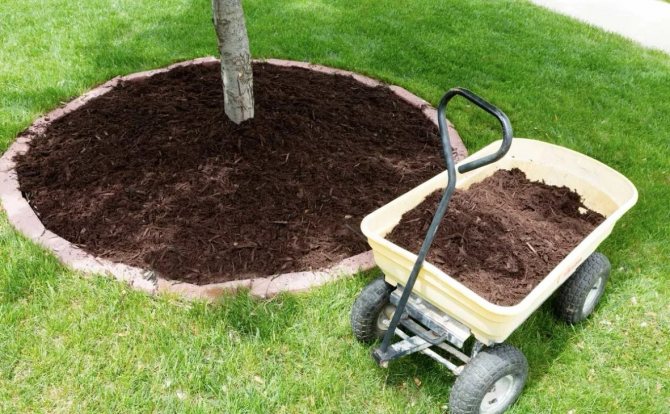

- Mown grass. Before laying the grass on the beds, it must be dried in the sun, otherwise it will rot and create an unfavorable environment.
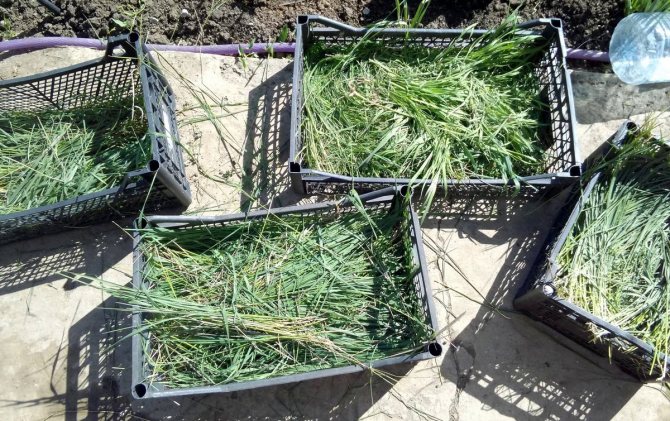

Inorganic mulch is used less often, although it also has its advantages.
The main materials here are:
- Roofing material or black film. These materials retain moisture well and prevent the growth of weeds, but they do not allow moisture to pass through, therefore, when watering them, they need to be removed or a belt system of soil irrigation should be carried out. So that they do not overheat in the summer, they make an additional shelter of straw.
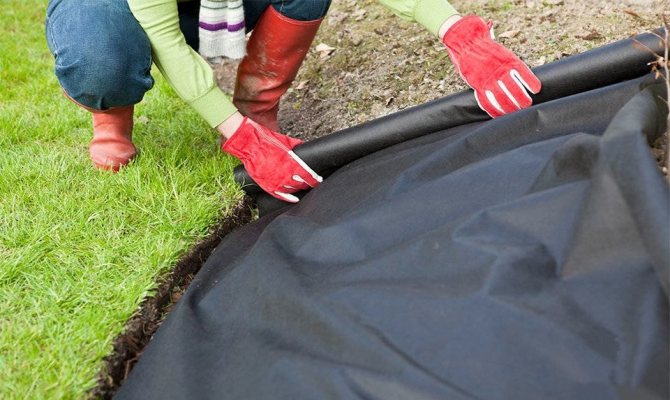

- Nonwovens. Agrofibre is best suited - although it does not improve the composition of the soil, like all inorganic mulch, it allows moisture and air to pass through, and the soil under it does not overheat.
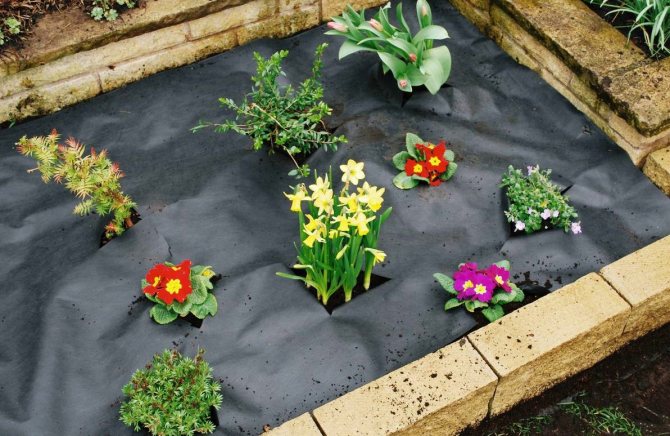

- Expanded clay... The material also retains moisture well and is often used for decorative purposes. In addition, it can be mixed with heavy soil to make it lighter.
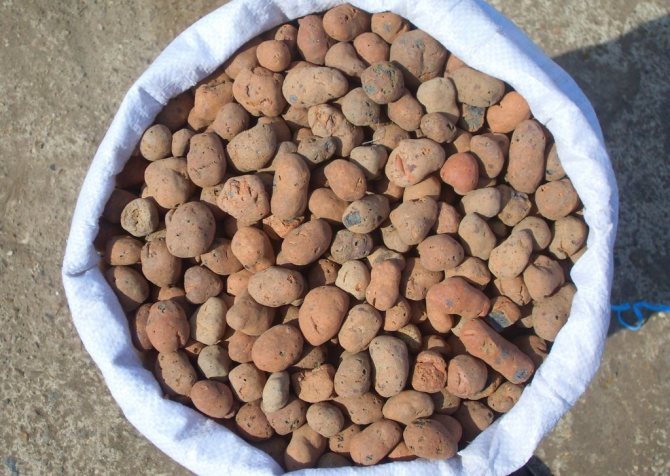

Decorating garden paths with mulch
Chips are the ideal technical material. Garden paths covered with wood cover remain attractive throughout the year. And running and walking on such a surface is incredibly pleasant even with bare feet. A coating layer 5-6 centimeters high is capable of perfectly retaining moisture. No weeds will break through such a barrier.
Even in rainy and muddy weather, the paths remain clean, providing a comfortable environment for moving around the site.
In areas where the dog is kept, wood chips can even help reduce odor and facilitate cleaning of the area.
What kind of chips are used
The production process of high-quality wood chips goes through complex technological stages. First, the raw material is cleaned, then crushed to a size of 3-5 mm. After that, the chips are sifted through a special device and treated with antiseptic agents against fungi and harmful insects.
At the final stage, many manufacturers paint the raw materials in different shades, which gives a lot of room for design imagination. Chips are made from different types of trees.
Did you know? Chips contain organic matter and mineral compounds, in particular 49% carbon, 44% oxygen and 7% hydrogen.
In gardening, the following material is most commonly used:
- pine chips - ideal for decorating areas where conifers grow. It will not only become an excellent decor, but will also nourish the soil with the elements necessary for evergreen crops;
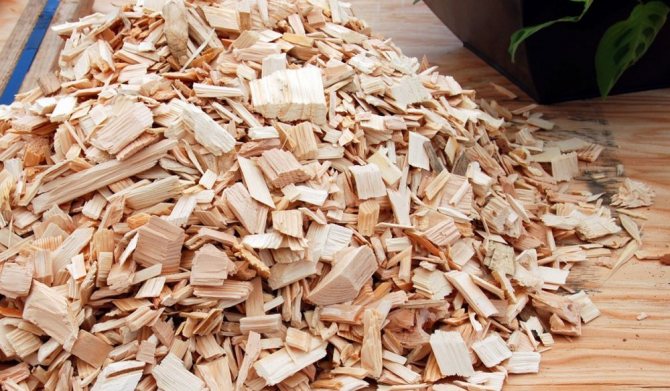

- oak chips - the material has a high density, thanks to which it will serve as a good insulation for the winter;
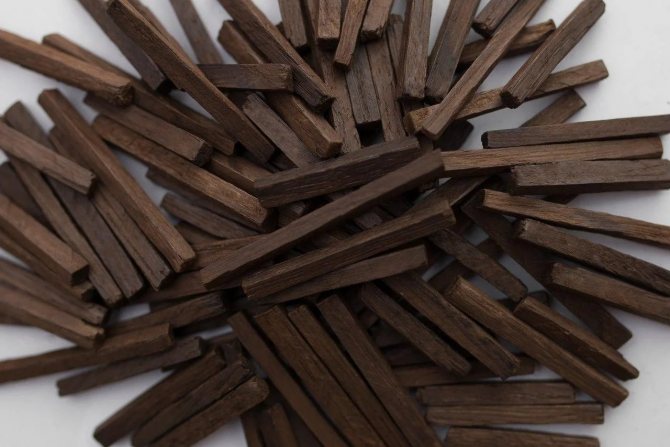

- larch bark - in comparison with pine, it is more expensive, as, in fact, the wood itself;
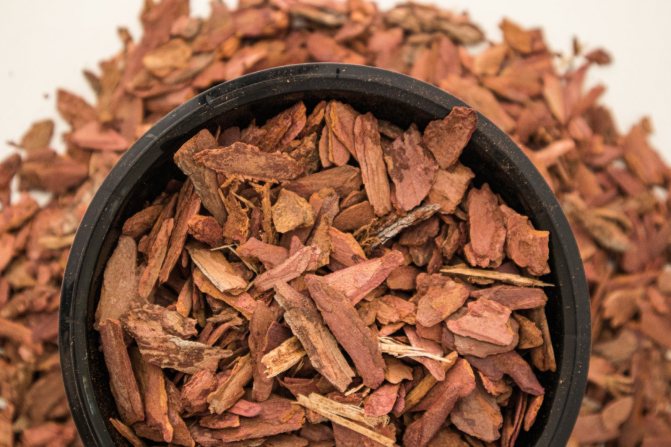

- spruce chips - has a pleasant coniferous aroma, and its natural color is darker than that of pine bark;
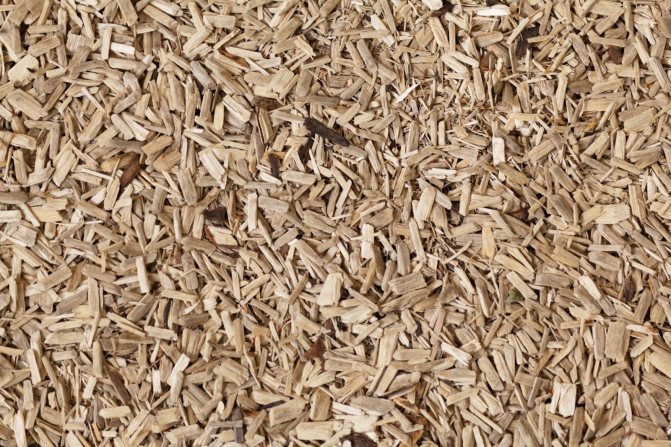

- cedar bark - the densest and warmest material.
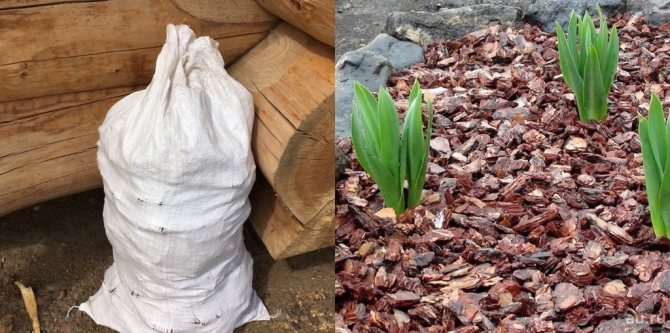

Mulch area care
Decorative wood chips are a fairly practical material in use, which requires knowledge of some features when laying. So, mulching in early spring is highly discouraged, since the soil is not yet warmed up and rot may appear during prolonged downpours. To place the wood chips, you need to make sure that the soil is warm enough and that the most favorable time is the end of spring.


The lining of the soil with decorative chips helps to preserve the required soil temperature near the plant roots, eliminating the risk of contrasting fluctuations. But, if you leave the mulch for the winter, then it will serve as a beneficial environment for earthworms and organic microflora. As a result, they recycle naturally occurring mulch and turn it into humus. Therefore, in the spring, the top layer of wood chips must be shifted and a new one must be added, 1-2 cm high.
The process of stacking chips can be seen in the video:
Using bark in landscaping
The use of wood chips in landscape design has several goals, since the material is multifunctional. With its help, you can not only create a high-quality covering layer, but also adequately decorate the garden, as well as other objects of the summer cottage.
Mulching and covering the soil
Wood chips are very beneficial for the soil. It contains a rich composition of elements necessary for the normal development of plants.The material can be used as mulch all year round. In the spring, it will not only protect the soil from drying out, but also become a good fertilizer.
Important! Coniferous wood chips are capable of oxidizing the soil, therefore it is recommended to use it to cover the near-trunk circle of plants that prefer acidified soil (conifers, heathers, rhododendrons, etc.).
The use of wood chips prevents weeds from growing, but only on condition that the layer is at least 5 cm. It is difficult for weeds to break through such a thickness. In the autumn, mulch protects the soil from erosion by heavy rains and drafts. In winter, it serves as a warm shelter, under which plant roots are well preserved until spring.
Decoration of flower beds and flower beds
With the help of decorative chips, you can decorate flower beds and flower beds, creating a single composition. Brown bark is considered classic, which has several basic shades: chestnut, terracotta and chocolate. It is most often used for mulching tree trunks, as well as for background filling.
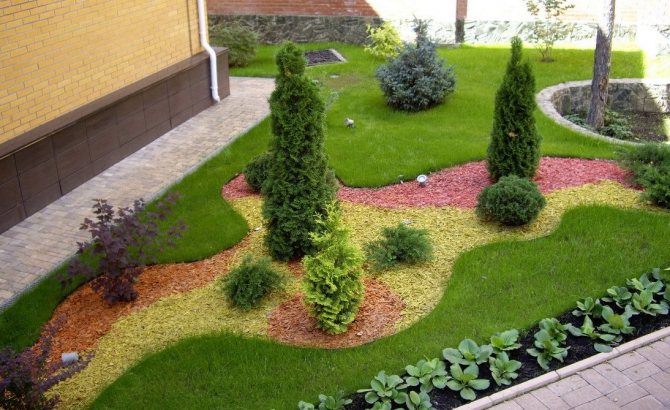

The multi-colored sliver provides an opportunity for the gardener to realize all his fantasies regarding the bright transformation of the site.
A monochrome background of crushed bark is often created on flower beds in order to emphasize the beauty of plants and avoid unnecessary "napiness". Green chips can simulate a lawn in places where live plants cannot take root (in darkened, waterlogged areas), or fill empty soil after digging a vegetable garden.
Check out
Pine bark mulch, use in the garden and vegetable garden
With the help of dyed mulch, you can diversify a flower bed with green ornamental shrubs, give it a stylistic focus. This design looks beautiful in flower beds with coniferous crops.
In this case, the variegated colors of the soil cover will adequately emphasize the delicacy of the greenery. You can also lay mulch around tree trunks with wood chips of different colors, and the garden will look very unusual and attractive.
The colored bark is especially good in winter, when the lawns remain practically bare.
The exception is evergreen crops, but many have weak frost resistance, which is why they are hidden under cover. During this period, the decor of multi-colored wood chips will significantly transform the site.
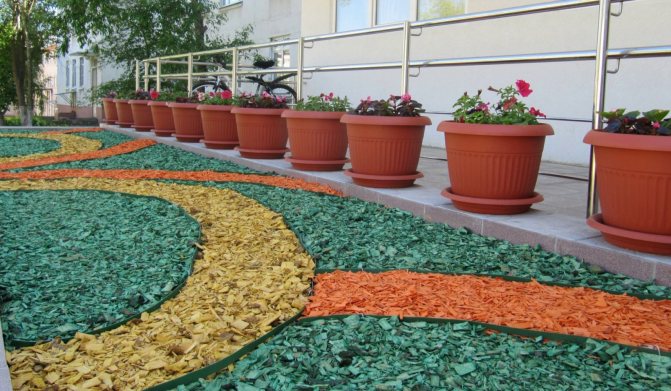

Playground flooring
The main advantage of small wood material for decorating playgrounds is its softness. When playing on such a surface, there is less chance that a child could get hurt. In addition, it is not only pleasant, but also useful to walk on the flooring with bare feet - with such walking, important points on the feet are activated, which are responsible for the work of various organs.
Important! The most visited places on the house plot are those that are located in the shady corners of the garden, because in the hot season it is here that you want to relax. Their design should be given special attention.
In addition to the benefits and safety, it should be noted the decorative function that the material performs. By purchasing wood chips of different bright colors, you can turn the playground into a masterpiece that will surely delight your child. After the rain, puddles will not stagnate on such a site, which is also important for children who do not want to sit in a country house.
Decorating paths and entrances
Decorative chips have recently found application in the design of garden paths, entrances, various paths between flower beds. It should be noted that this is a fairly economical option, which will cost several times less than laying tiles or a concrete base.
Any gardener can easily cope with such work. As with the playground, chipping paths has the advantage of preventing puddles from stagnating during rainy periods. In addition, the coating has shock-absorbing properties.
If the paths perform an aesthetic function, playing the role of separators of different zones, they can be decorated with a variety of mulch patterns. First, a sketch is drawn on the ground, and then different colors of material are poured over it. With the help of wood chips, you can make a beautiful entrance to the house. Such a coating will not only keep clean, but also facilitate the movement of the car.
How to prepare a site?
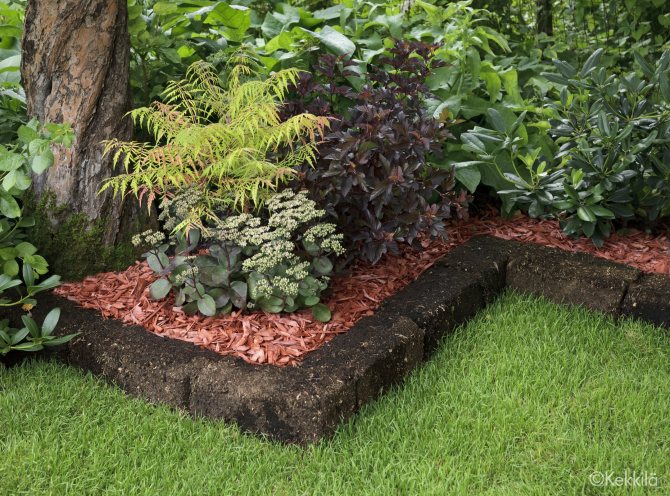

Decorative chips prevent weeds from germinating.
So, in order to decorate the land in the country or in the courtyard with mulch, you need to carry out some preparatory work:
- remove weeds in the place where there will be sawdust;
- loosen the ground and fertilize the top layer;
- water and fall asleep.
It will be enough 5-8 cm in height. The best time for such work is after the rain. Advice from experts: in the shade, the layer of chips should be less than in sunny areas. You can sprinkle decorative dumping in almost any season of the year, except for winter. In the spring, wood shavings will protect the garden from weeds and concentrate the moisture accumulated during the winter in the ground, in the summer it will protect against excessive evaporation of water, in the fall it will add color to faded flower beds, and will also protect the roots from early frosts. For the benefit of the plants, it is recommended to renew the chip layer every year.
Advantages of decorative chips
- In addition to softness, benefits for the soil and decorativeness, tree bark is a natural eco-material and has many other advantages:
- decomposes and does not harm humans or the environment;
- perfectly retains soil moisture and protects it from overheating;
- inhibits the growth of weeds;
- decorates the landscape, including single plantings and floral arrangements;
- serves for a long time (up to 5 years) and is not afraid of fungus;
- can be used as a covering for playgrounds and sports grounds;
- allows you to create drawings on the ground in different styles and palettes;
- evokes associations with forest thickets due to its pleasant aroma;
- is inexpensive.
Decoration of flower arrangements
On the site of every self-respecting gardener there is a special area set aside for planting flower arrangements. Flower beds can be of a wide variety of shapes, ranging from geometrically regular squares to bizarre shapes. Decorative chips can be used as an original decoration for this area.
Ordinary gardeners and professional designers use wood chips as mulch and decorative coating. With the help of it, you can combine alpine slides, rose gardens and mixborders into one composition. Wood chips look especially impressive under spreading shrubs and trees. It can also be used as a lawn.
A rich green hue will look as impressive as real grass. Experienced gardeners boldly use this material to create original compositions. Sea waves, sand dunes, geometric shapes or a rainbow snake - all this is easy to create using multi-colored wood chips.
Making decorative chips with your own hands
The easiest way to get decorative chips is to buy them in bags. You can also go to the nearest sawmill or woodworking factory. Further, ready-made raw materials can be painted. If you wish, you can make your own wood chips, but for this you need a special machine designed for processing wood.
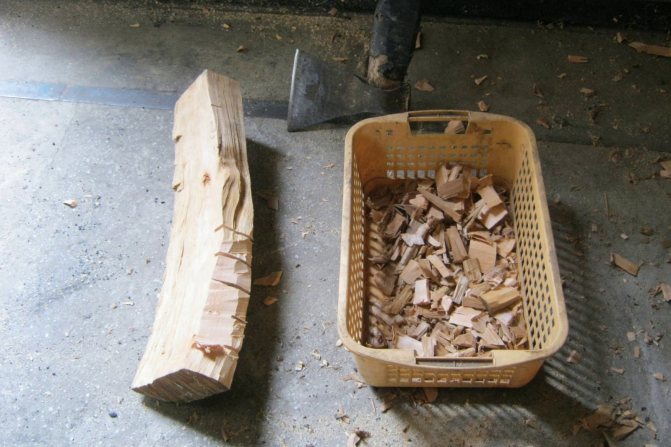

The resulting material is painted in small portions: chips are poured into a bowl and poured with a mixture of dye diluted with a solvent to a liquid consistency. The contents of the bowl must be constantly stirred so that the material acquires an even color. After processing, it must be spread out to dry.
Arrangement of playgrounds and sports grounds
Decorative wood chips on playgrounds are a versatile material that will help moms forget about the earthy and grassy spots on their kids' pants. Wood waste is absolutely safe for the health of children, and also allows you to create bright compositions due to its color variety. That is why decorative chips are often used for the improvement of playgrounds.
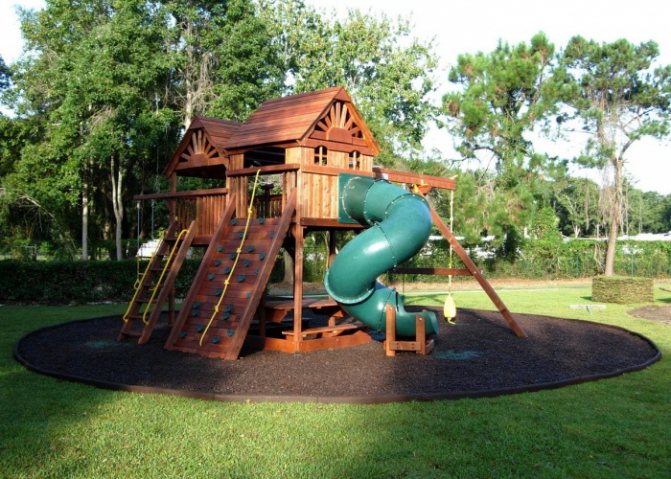

In addition, such a coating ensures the safety of the child - he will not be able to scratch his leg by accidentally falling, or pick up any nasty things. In the process of making a decorative coating, double grinding and grinding is used, which means that children can play even barefoot without driving a splinter.
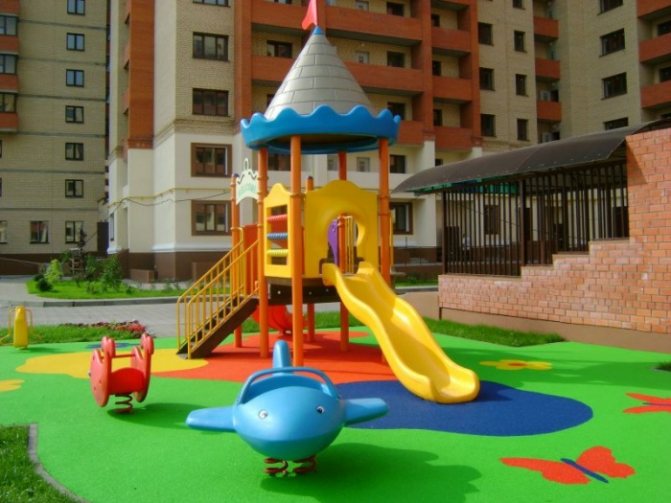

How can you paint chips
There are a lot of options for painting the bark. All of them can be divided into two main categories: natural dyes and unnatural. Each of them has its own advantages and disadvantages.
Did you know? Wood chips are a filler for a durable building material
—
wood concrete, which is used to form large-sized masonry.
Natural ingredients are good for coloring mulch used for fruit crops... It does not pollute the site and does not interfere with the process of converting fertilizer into humus. The disadvantage is that the color will not be bright, and the paint will last no longer than three seasons. Natural dyes include: lime, brilliant green, potassium permanganate, beet juice, onion shell decoction, as well as watercolors and gouache.
To make the colored chips look expressive and retain their color for a long time, artificial dyes are usedkeeping tone up to 20 years. But it must be borne in mind that such funds can make mulch dangerous for the garden. Non-natural dyes include acrylic and water-based paints.
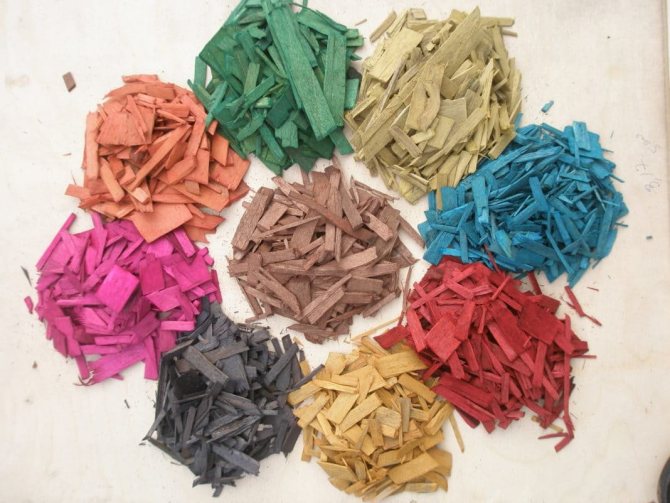

Decorative chips for a gardener can be a profitable solution for decorating a plot, combining an inexpensive cost and an attractive appearance. These sawdust, which you can also make yourself, will protect plants from the negative effects of the environment and serve as a beautiful material for decorating the local area.
Creation of drawings and patterns at the summer cottage from wood chips
It works well with other materials, including stone, pebbles and bark. Due to the wide variety of types and shades of material, it is completely easy to independently create original drawings and patterns on your personal plot. In order to create a landscape design with your own hands, you must adhere to the following simple recommendations:
- the soil on the site must be dug up and well loosened;
- all weeds should be carefully removed from the territory;
- you must first think over the design, including the color scheme, shape and type of mulch used;
- on the surface of the ground, you should carefully mark the contours in accordance with the intended pattern;
- chips scattered over the surface must be carefully leveled, which will allow obtaining a uniform layer with a height of 30-60 mm.
Depending on the area of use, add approximately 10 mm of fresh decorative chips annually.
